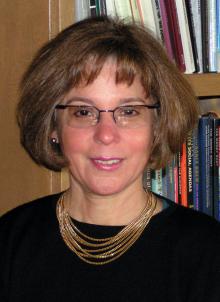
Media experts have noted that the series "I Love Lucy," which debuted on American television in 1951, is broadcast somewhere in the world 24 hours a day, seven days a week. Credit for the program's longevity goes to television syndication, a booming global marketplace in which television shows are imported from and exported to countries all over the world.
In a book titled "Global TV: Exporting Television and Culture in the World Market" (New York University Press, 2008), Denise D. Bielby, a professor of sociology at UC Santa Barbara, takes a look at the workings of the industry, including its origins, history, and product management. The book is co-written with C. Lee Harrington, a professor of sociology at Miami University in Oxford, Ohio.
In their examination of the global television market, Bielby and Harrington explore the cultural significance of this international trade, and seek to understand its remarkable success despite the inherent cultural differences between shows and local audiences. How do culture-specific genres like American soap operas and Latin telenovelas so easily cross borders and adapt to new cultural surroundings? And why is "The Nanny," whose gum-chewing star hails from Queens, N.Y., a smash in Italy?
"I had been studying the industry itself through the lens of TV writers," said Bielby, who is also an affiliate faculty member of UCSB's film and media studies department. "I'd been doing consulting for the Writers' Guild of America, and one of the things I noticed was that the writers were continuing to earn residuals for their previous writing assignments and they were coming from all over the world. I thought to myself, ‘There's something going on here.'"
At that point, Bielby and Harrington, who had collaborated previously on the book "Soap Fans: Pursuing Pleasure and Making Meaning in Everyday Life," in which they examined the dedication of soap opera fans, decided to embark on a study of how global marketing of the television industry is organized.
"The market began in the 1950's," Bielby said. "It dates back to the beginning of the commercial industry of television. In every respect, however, every element of the industry has evolved over time –– the domestic industry in its level of sophistication in promotion and marketing, and other nations developing their own industries, and audiences becoming increasingly more interested in programming from their own countries."
Although the United States has been dominant in international marketing of television programming, robust regional distributions have emerged over the last 15 years. "It has a lot to do with a preference for the familiar, the emergence of cable and satellite, and a lot of new networks requiring additional programming," said Bielby. "It also has to do with immigration and international travel."
When Bielby and Harrington began working on the book, they wanted to examine what they believe has been a very dominant paradigm in the social sciences –– that American exports are culturally hegemonic. "Often that's as far as scholarship goes," Bielby said. "We wanted to get a better of sense of where the nuance was in that argument. So we want to show that the theoretical picture is actually more complicated and much more complex."
She and Harrington also sought to clarify the complexity of the television industry itself. "Typically, sociologists would study the industry as a social institution and not get into the substance or content of the product," Bielby said. "But we do. What I was particularly intrigued with was the ways in which television as an art form is managed. In an industry that's concerned with revenue, we were interested in how its members talk about this very complicated, sometimes delightfully entertaining, and sometimes abysmally dreadful cultural product."
As social scientists, Bielby and Harrington became interested in the ways in which cultural understandings come into play in these particular business dynamics within the industry. "We wanted to bring understandings about culture into what is often just a dry way of studying social organizations," she said.
Issued: Dec. 23; updated: Dec. 30
Related Links



